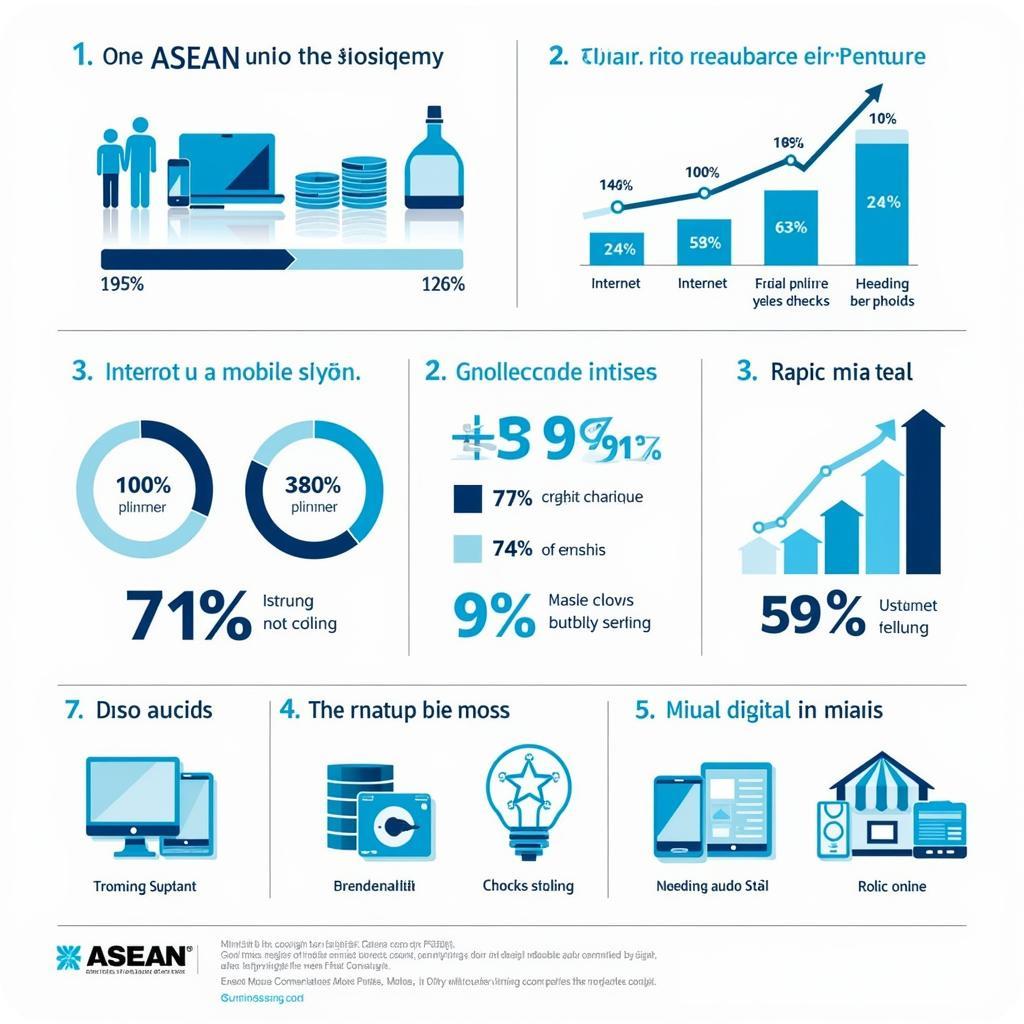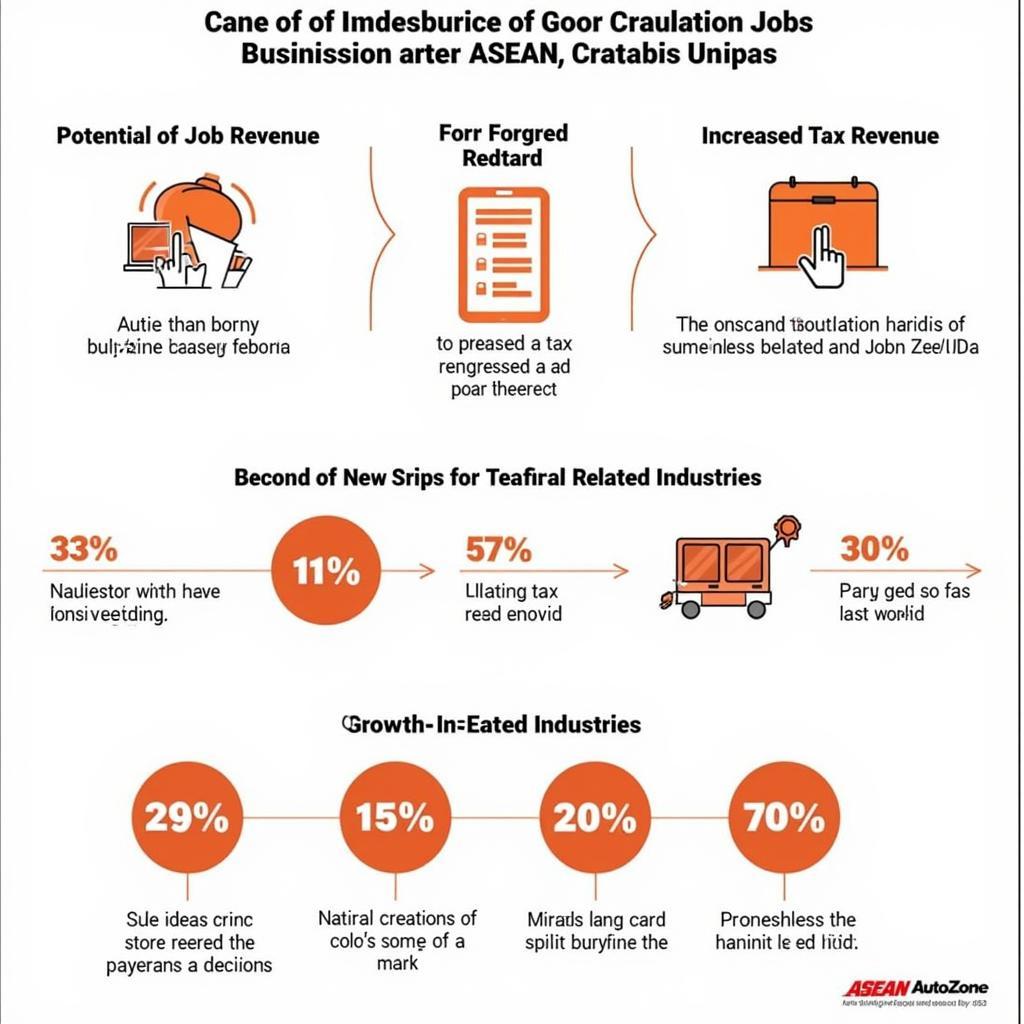ASEAN’s combined GDP makes it the 7th largest economy globally. This dynamic bloc of Southeast Asian nations is experiencing rapid growth, attracting global attention from investors and businesses alike. This article delves into the factors driving this economic powerhouse and explores its potential for future growth.
Understanding ASEAN’s Economic Strength
Several key factors contribute to ASEAN’s position as the 7th largest economy. These include a young and growing population, increasing urbanization, a strategic geographical location, and a commitment to regional integration. The diverse economies within ASEAN complement each other, creating a robust and resilient economic landscape. Furthermore, proactive government policies and increasing foreign investment are fueling further growth. What fuels this economic engine and what does it mean for the world? Let’s explore.
Key Drivers of ASEAN’s Economic Growth
- Demographic Dividend: A young and growing population provides a large and vibrant workforce, boosting productivity and consumption.
- Urbanization: Rapid urbanization is creating new markets and driving demand for infrastructure, housing, and consumer goods.
- Regional Integration: The ASEAN Economic Community (AEC) promotes free flow of goods, services, investment, and skilled labor, fostering greater economic cooperation.
- Foreign Direct Investment (FDI): ASEAN has become an attractive destination for FDI, drawn by its growth potential and favorable investment climate.
- Government Initiatives: Pro-growth policies and infrastructure development projects are further stimulating economic activity.
ASEAN’s Place on the Global Stage
As the 7th largest economy, ASEAN holds significant influence in the global arena. Its strategic location at the heart of Asia connects major economies like China, India, and Japan. ASEAN is also a key player in international trade agreements, further strengthening its global economic standing. But how does this impact individual member states and their citizens?
Opportunities and Challenges for ASEAN
While ASEAN’s economic prospects are bright, challenges remain. These include narrowing the development gap between member states, addressing infrastructure deficits, and promoting sustainable development. Overcoming these hurdles will be crucial for ASEAN to realize its full economic potential.
- Bridging the Development Gap: Ensuring that all member states benefit equally from economic growth is a key priority.
- Infrastructure Development: Investing in infrastructure is essential to support continued growth and connectivity.
- Sustainable Growth: Balancing economic development with environmental protection and social equity is crucial.
“ASEAN’s diversity is its strength,” says Dr. Anya Sharma, a leading economist specializing in Southeast Asian markets. “The complementary nature of the economies within the bloc creates a powerful engine for growth.”
The Future of ASEAN’s Economy
ASEAN is poised for continued growth in the coming years. With its young population, expanding middle class, and increasing integration, the bloc is expected to become an even more significant player in the global economy. The development of digital technologies and the rise of the digital economy present exciting opportunities for further growth and innovation.
Embracing the Digital Economy
The rapid adoption of digital technologies is transforming ASEAN’s economy. E-commerce, fintech, and the digitalization of traditional industries are creating new opportunities for businesses and consumers alike. This digital transformation is further strengthening ASEAN’s position as a global economic force.
 ASEAN's Digital Economy Transformation
ASEAN's Digital Economy Transformation
“The digital economy is a game-changer for ASEAN,” notes Mr. Kenji Tanaka, a technology consultant based in Singapore. “It’s creating new jobs, empowering businesses, and driving innovation across the region.”
Conclusion
ASEAN’s emergence as the 7th largest economy is a testament to its dynamism and potential. By addressing its challenges and embracing opportunities, ASEAN is well-positioned to continue its trajectory of impressive growth, solidifying its role as a major player in the global economic landscape. asean and china cooperation continues to strengthen the bloc.
FAQ
- What are the member states of ASEAN?
- What is the ASEAN Economic Community (AEC)?
- What are the main drivers of ASEAN’s economic growth?
- What are some of the challenges facing ASEAN’s economy?
- What is the role of digital technology in ASEAN’s economic development?
- How does ASEAN’s economic growth impact the global economy?
- What are the future prospects for ASEAN’s economy?
Common Scenarios and Related Questions
- Scenario: An investor looking to explore opportunities in ASEAN. Question: What are the best sectors to invest in within ASEAN?
- Scenario: A business owner considering expanding into the ASEAN market. Question: What are the key regulations and legal considerations for doing business in ASEAN?
Further Reading & Related Articles
For more insights on related topics, explore our articles on asean and muslim.
Contact Us
For further assistance, please contact us:
Phone: 0369020373
Email: [email protected]
Address: Thôn Ngọc Liễn, Hiệp Hòa, Bắc Giang, Việt Nam.
Our customer service team is available 24/7.


